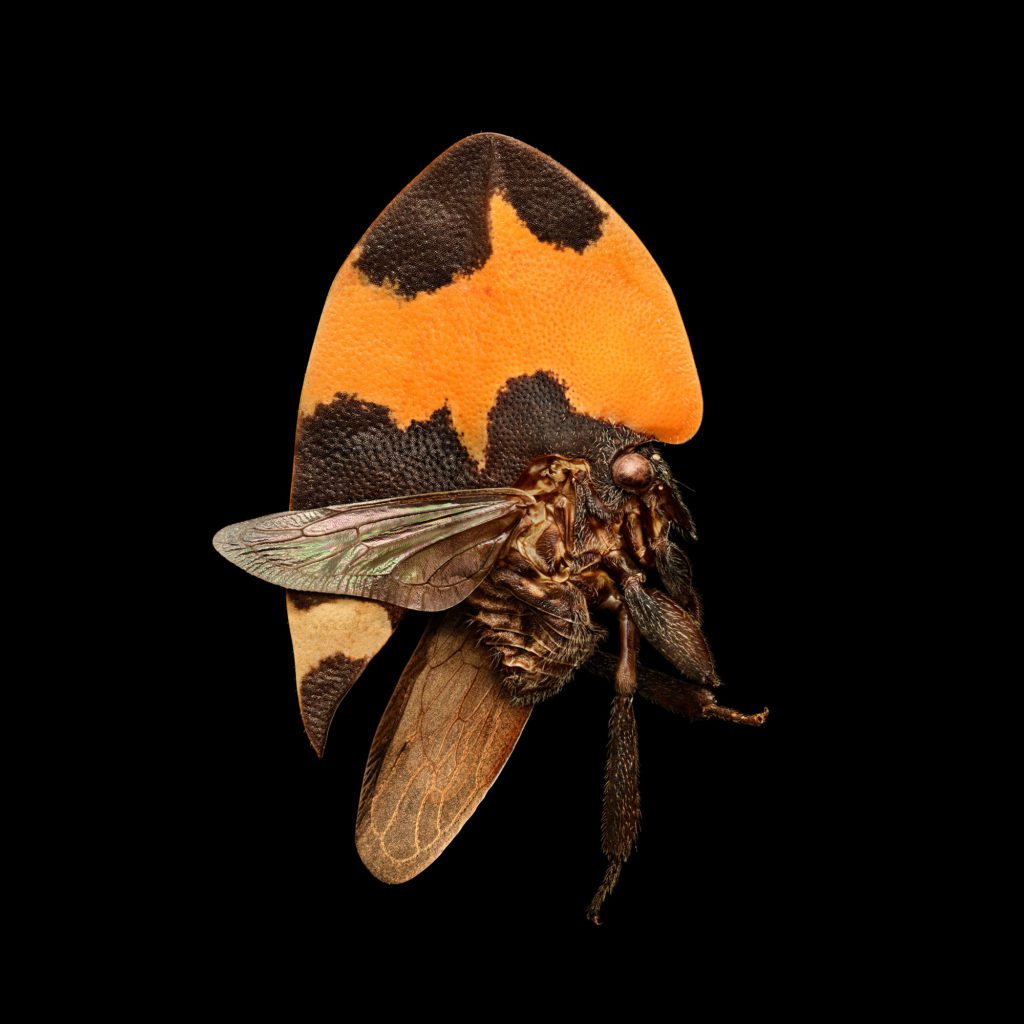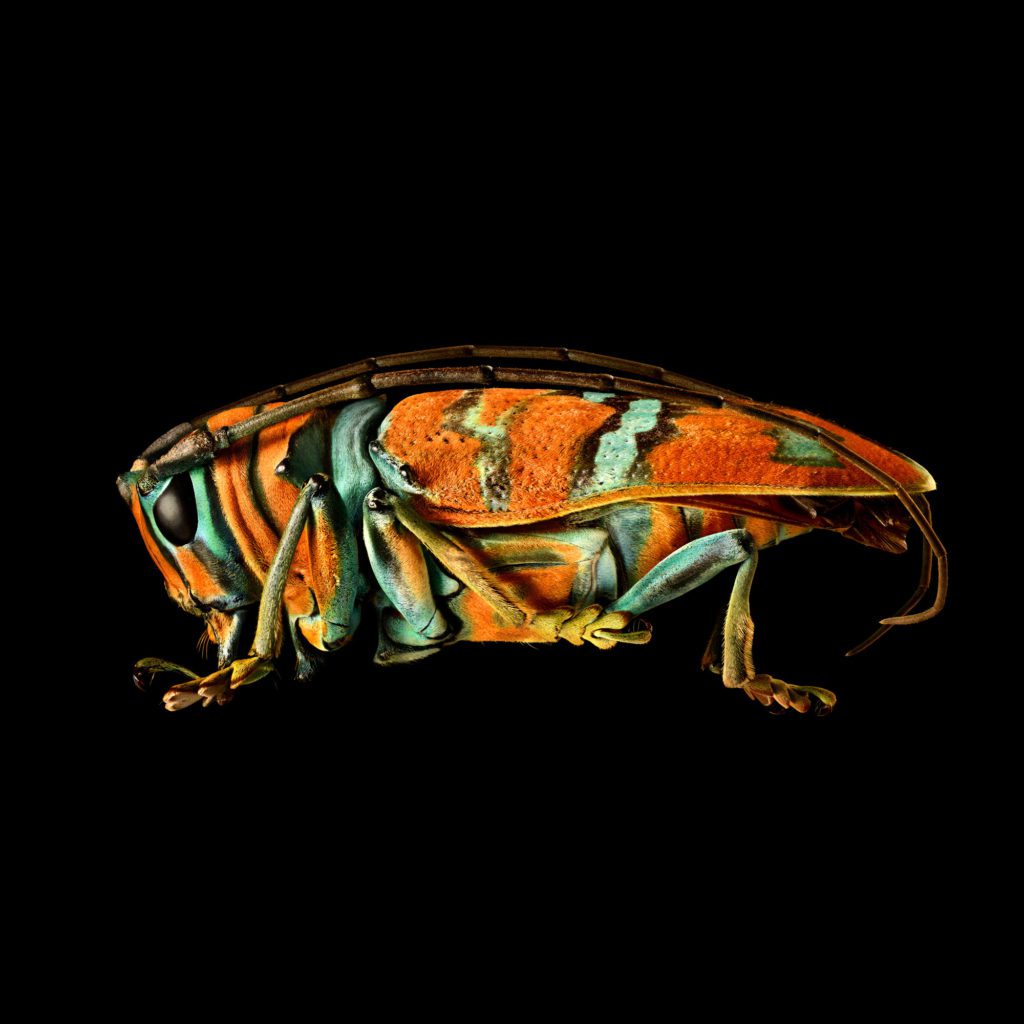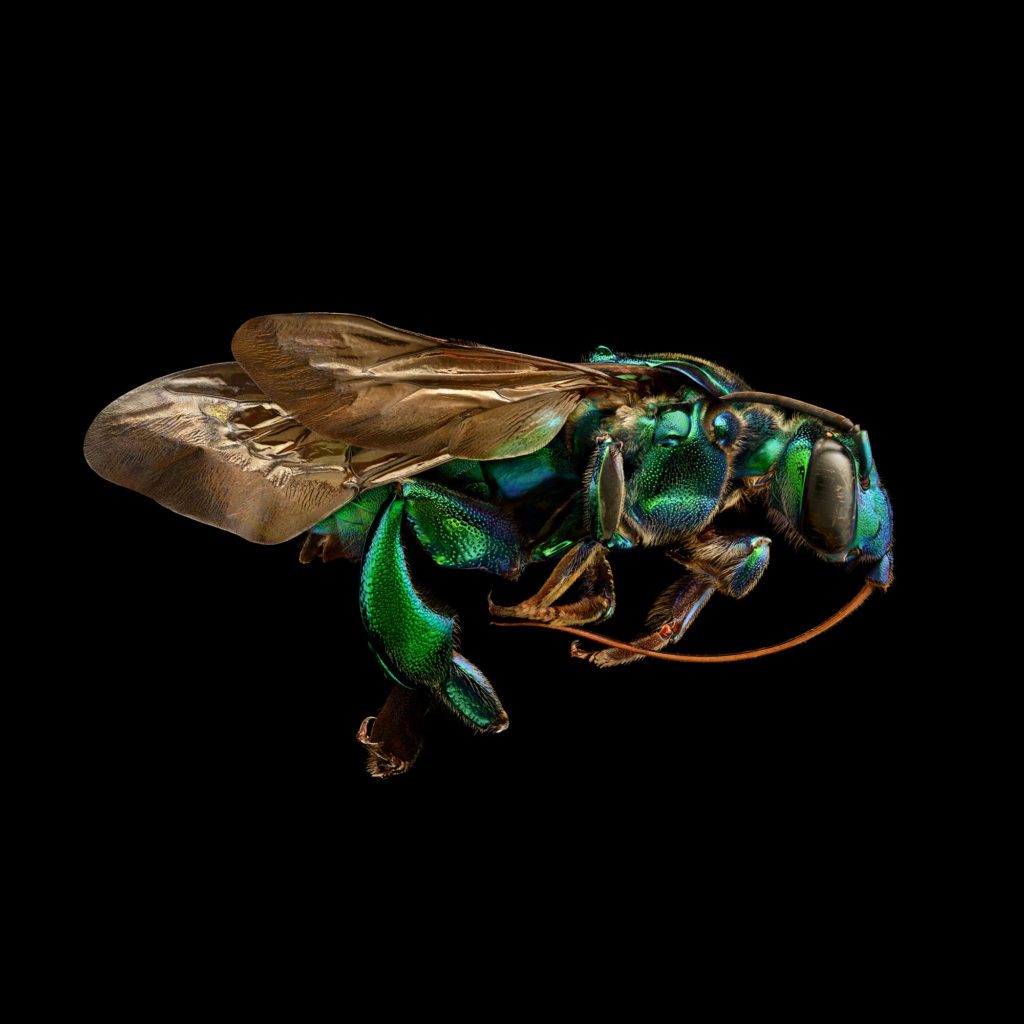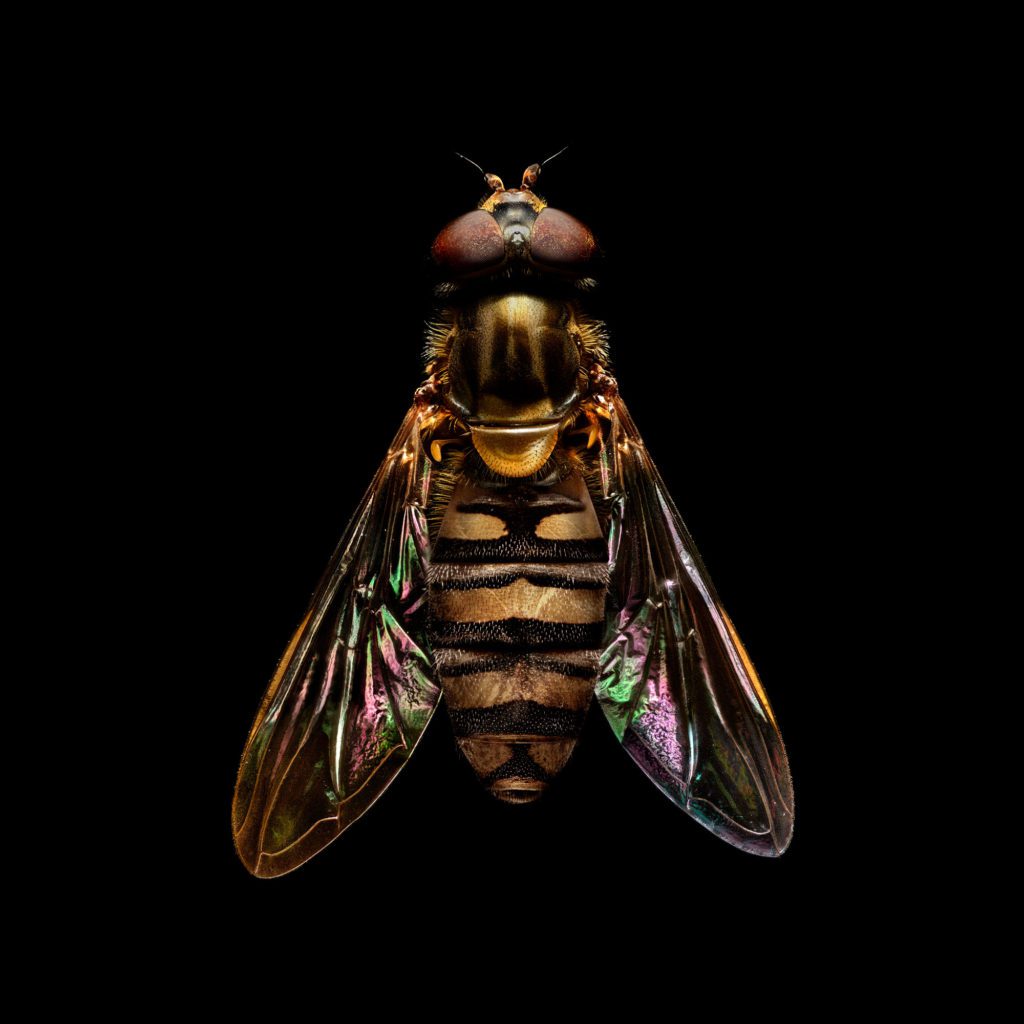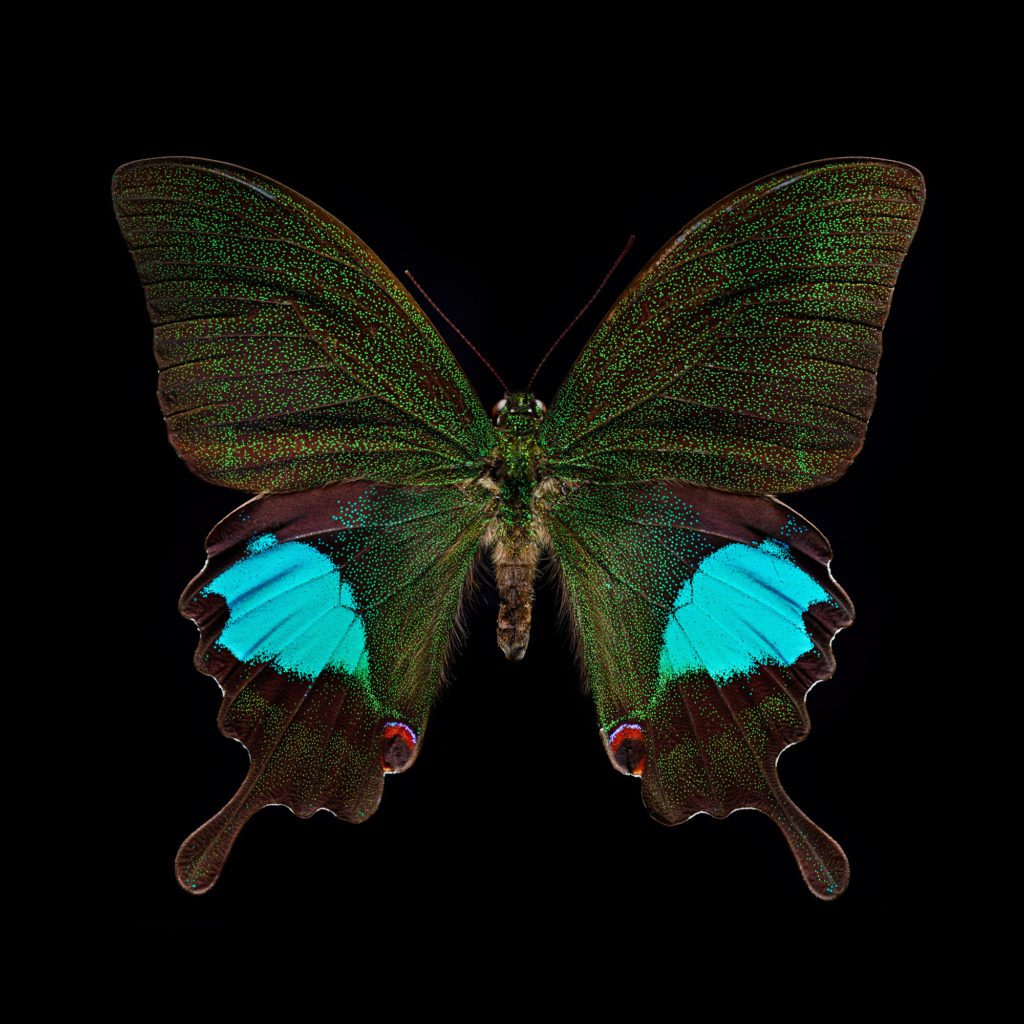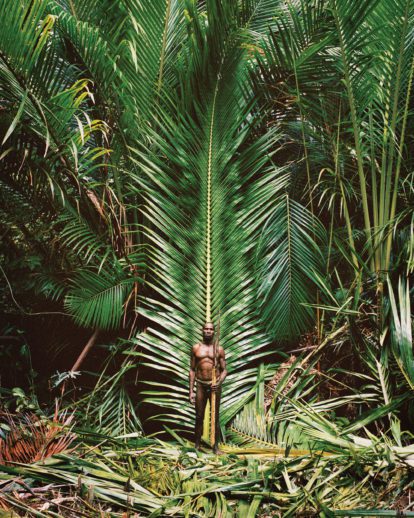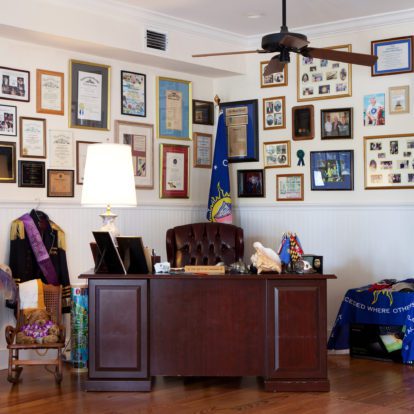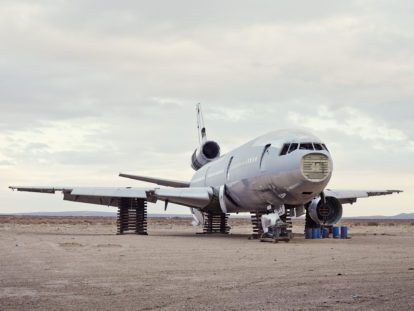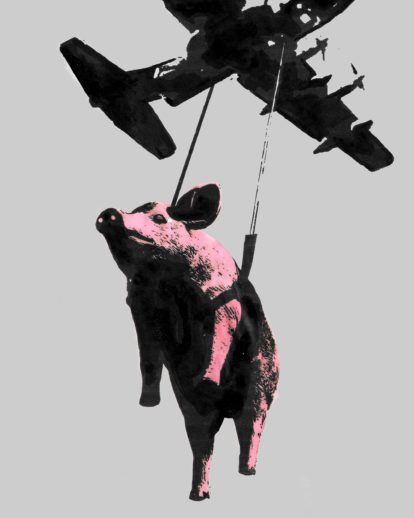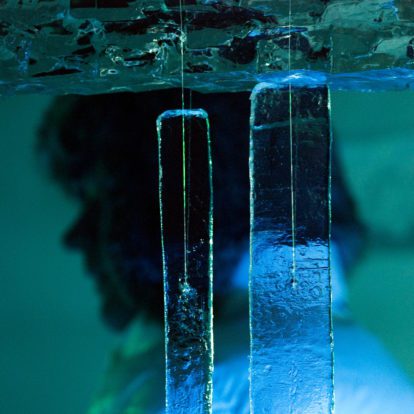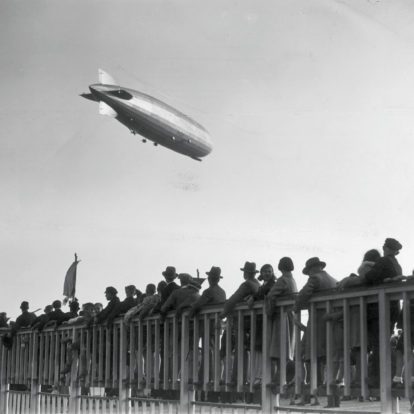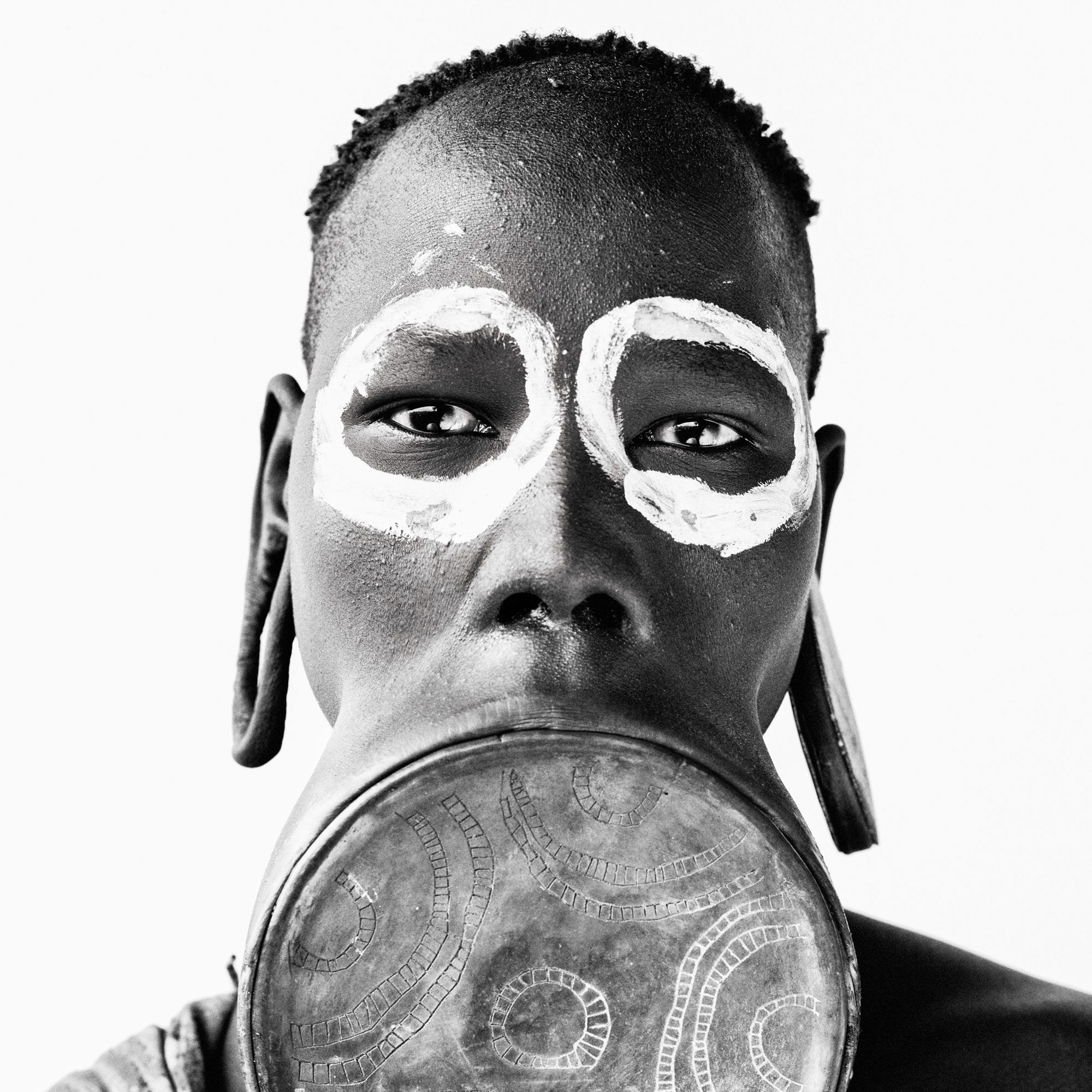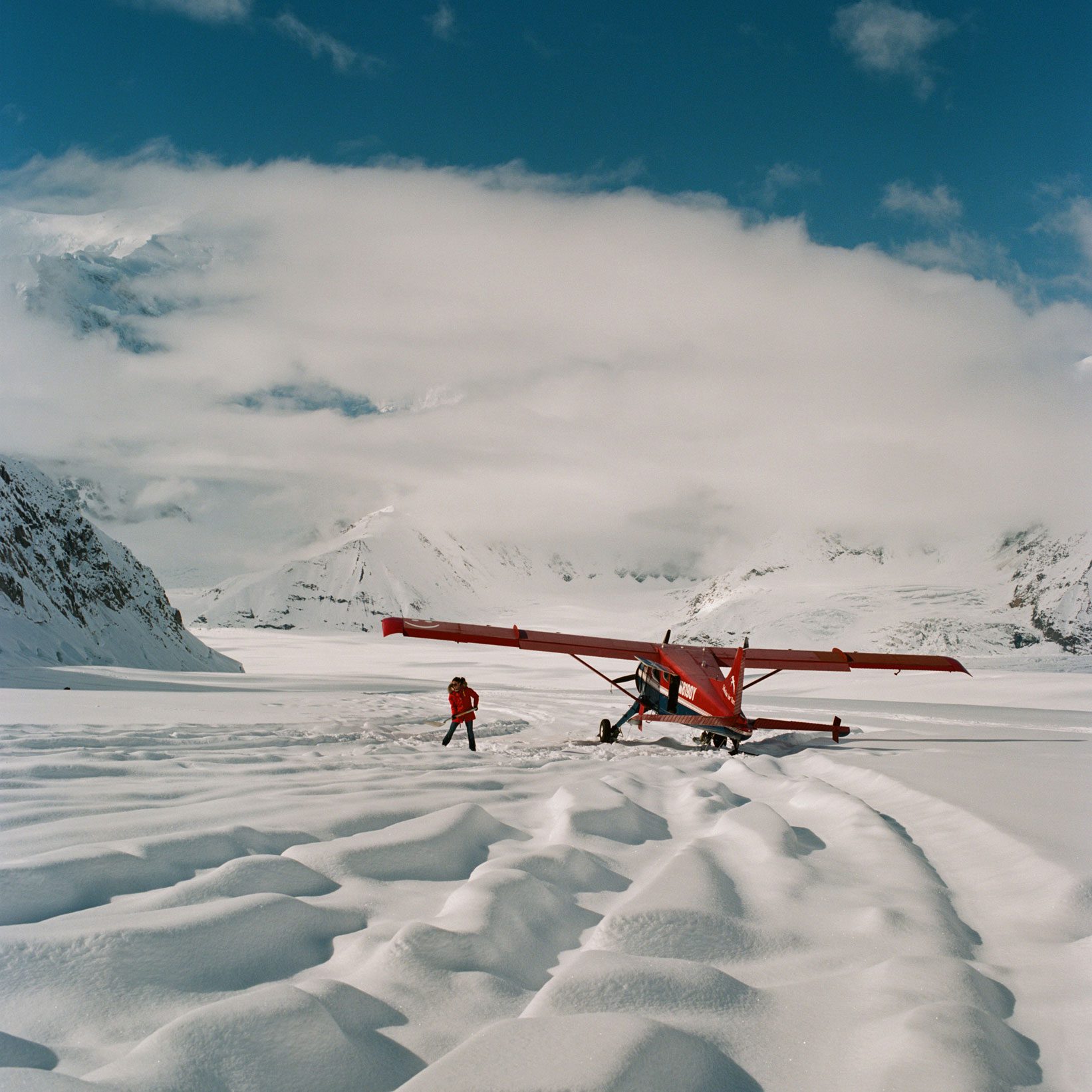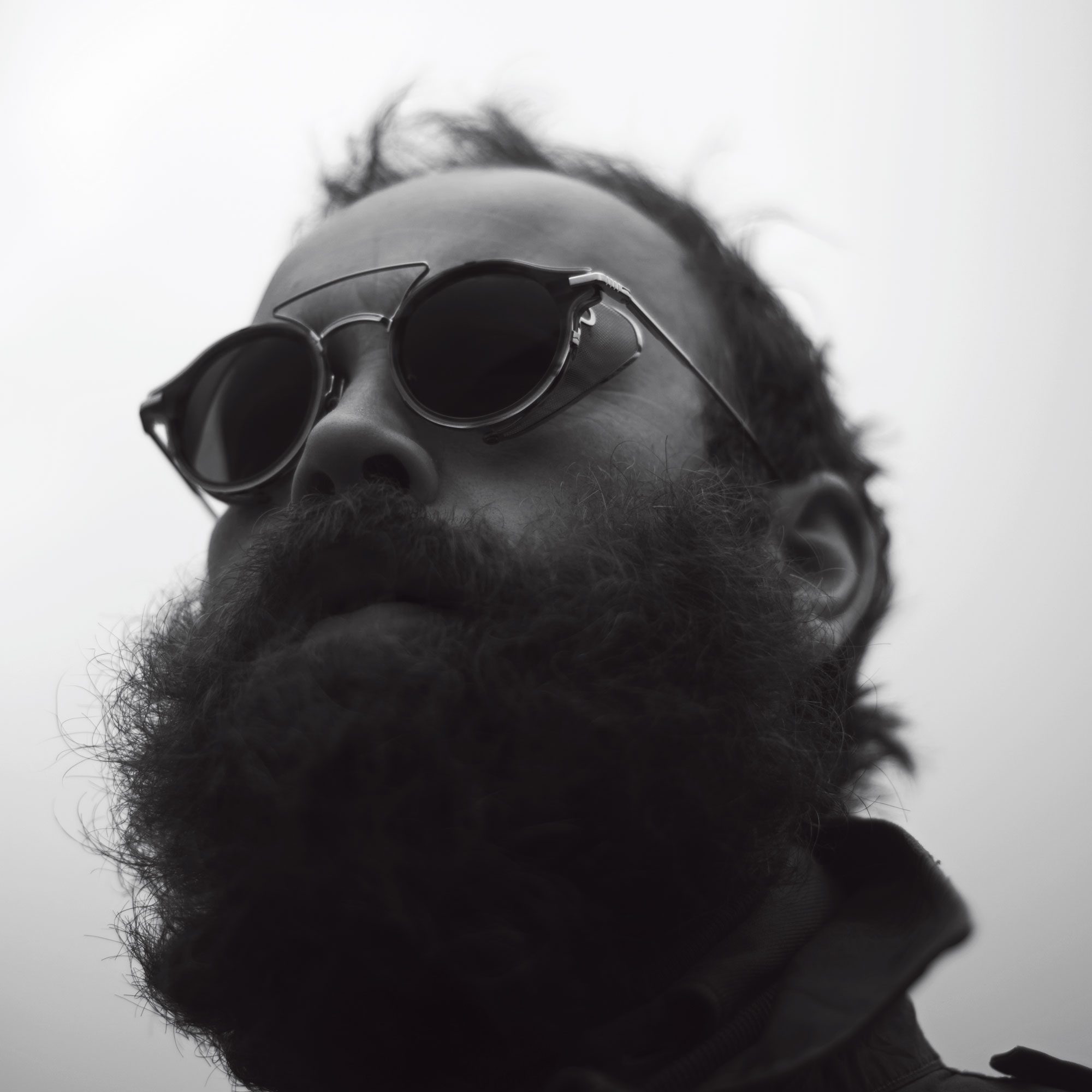The Microsculpture series began as a push against the increasingly disposable nature of photography in the digital age. We have adopted the mentality that photographs are cheap because they are now easy and free to produce; my aim was to create imagery that has a real sense of worth again. Something that took time, patience and simple hard work to create, images that could never be classed as disposable.
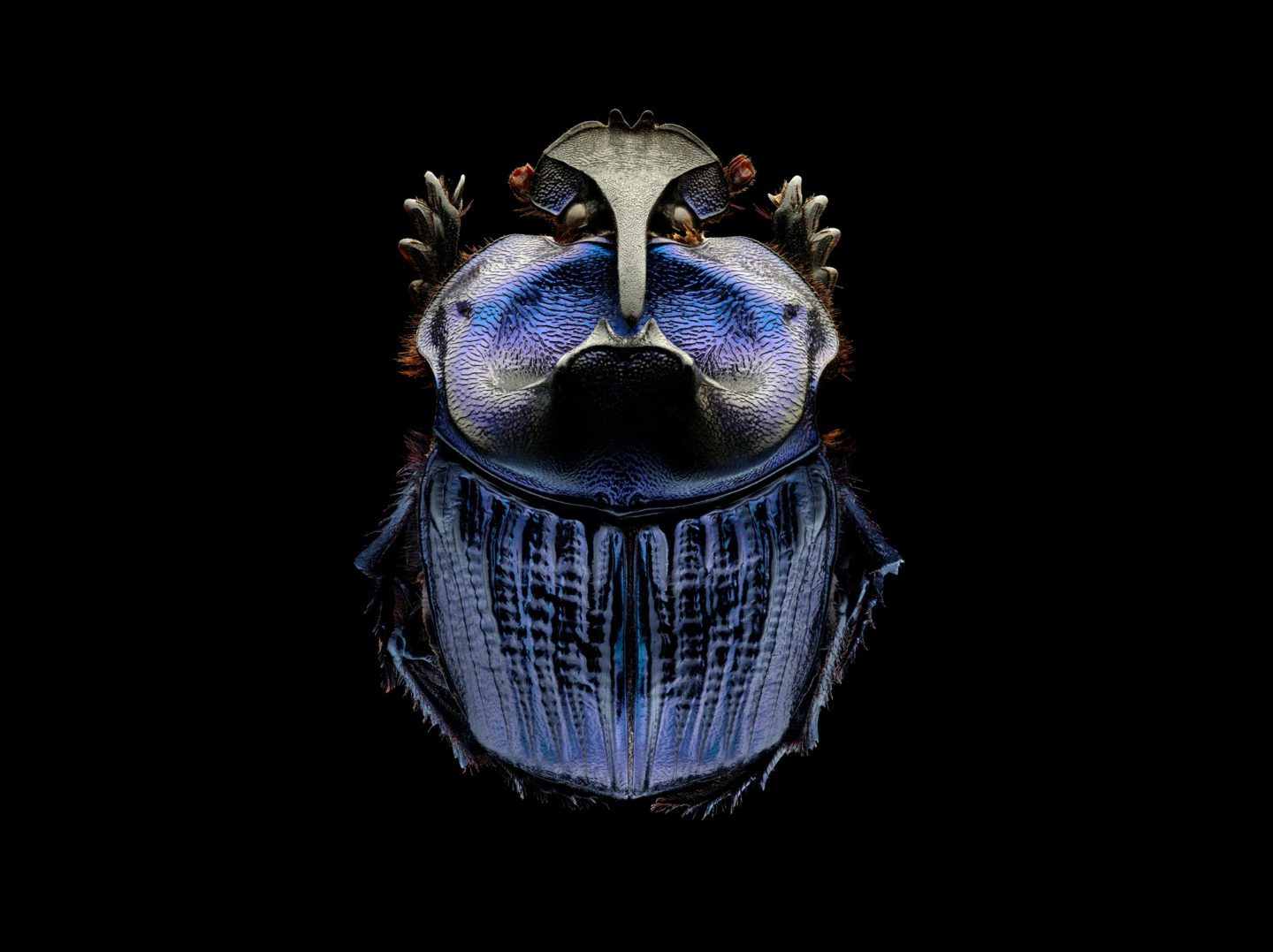
The Amazonian Purple Warrior Scarab Coprophanaeus Lancifer (Coleoptera, Scarabaeidae).
The project was also a way of exercising my brain again and forcing myself to learn an entirely new way of shooting. I wanted to see if I could take my experience of photographic lighting techniques and translate that onto a subject that was only 6mm long whilst still keeping creative control over the light.
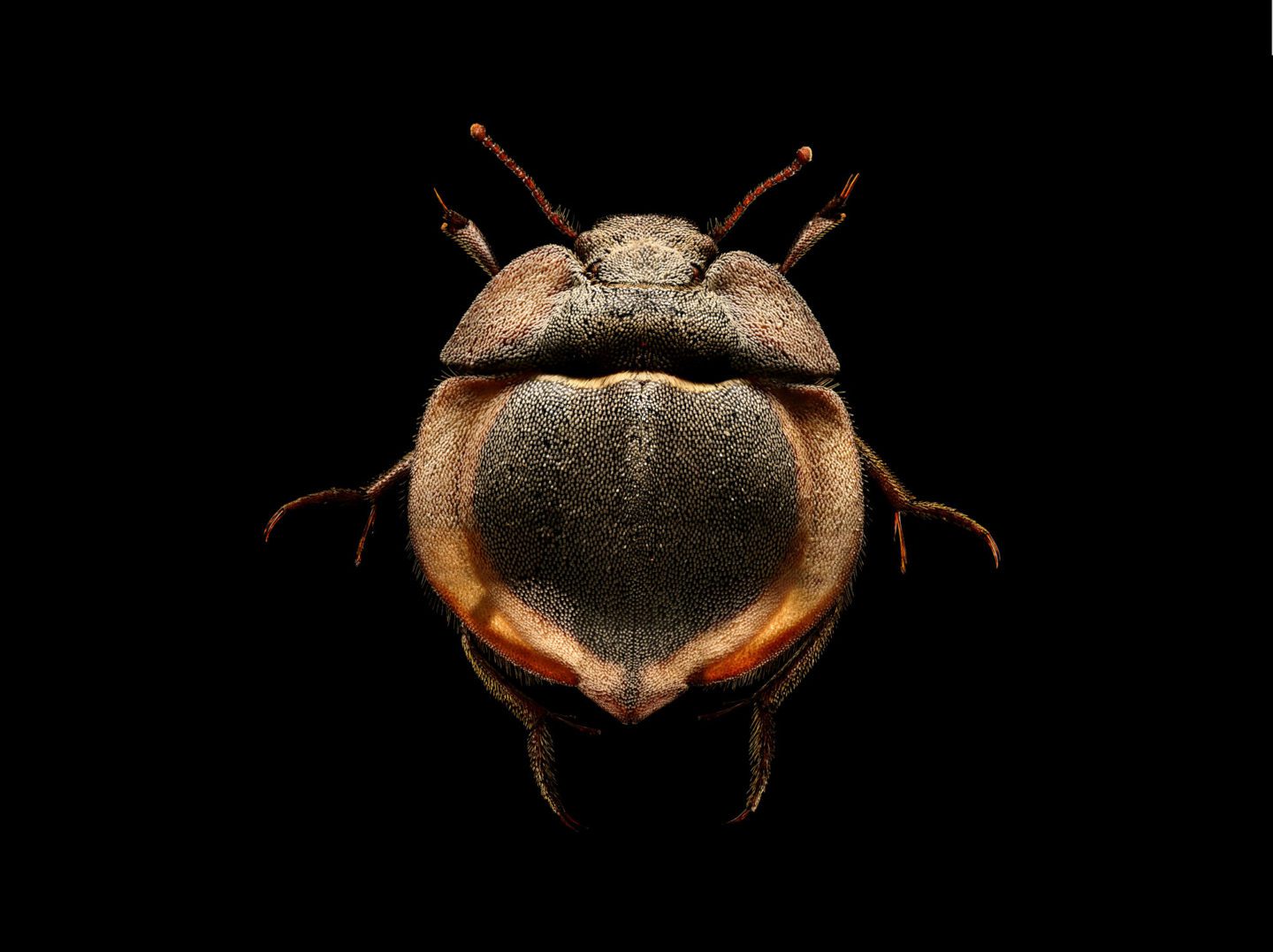
The Flying Saucer Trench Beetle Lepidochora Porti (Coleoptera Tenebrionidae).
The technical challenges of photography at high magnification are huge, mostly due to the extreme shallow depth of field developed when using microscope lenses. To get around this each image is created from over 8,000 separate shots each with a tiny slither of focus that is then compressed to create a single picture that is fully focused from front to back.
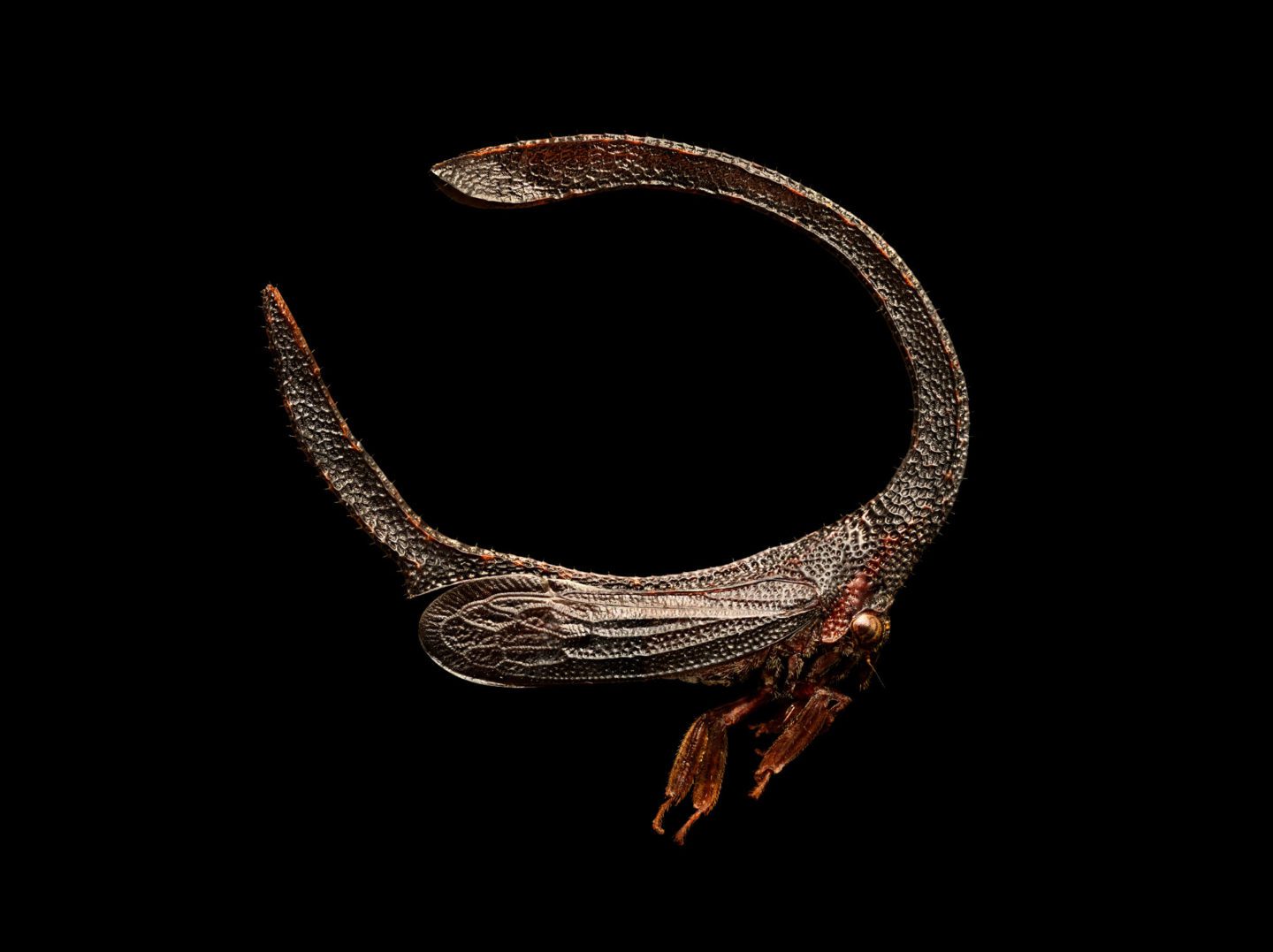
Branch-Backed Treehopper Cladonota sp. (Hemiptera, Membracidae).
To keep the creative control though I split the insect up into 20 to 30 different sections and shoot each one like an individual still life, just to make that one section as beautiful as it can possibly be. When I have all these sections flattened down and in full focus they are brought together like a jigsaw to create the final image.
